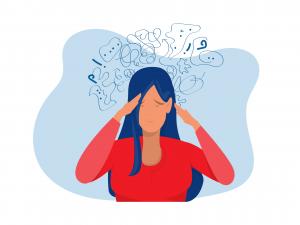ADD and Anxiety: Understanding the Overlap and Clinical Connection
At ADD Clinics in Gulfport, Mississippi, Dr. Stanford Owen has focused extensively on the co-occurrence of ADD and anxiety in adult and adolescent populations. Both conditions are prevalent in clinical practice, and their combined presentation often complicates the treatment pathway. In many cases, patients presenting with restlessness, difficulty concentrating, or chronic worry may be exhibiting signs of both disorders simultaneously.
“ADD and anxiety disorders frequently reinforce each other in clinical presentation,” said Dr. Stanford Owen, founder of ADD Clinics. “ADD increases the likelihood of experiencing anxiety, and unresolved anxiety can make ADD symptoms more disruptive. Proper identification of both is essential for effective intervention.”
Clinically, ADD is characterized by symptoms such as inattention, distractibility, forgetfulness, and impulsivity. Anxiety, on the other hand, is marked by excessive worry, tension, nervousness, and physical manifestations such as increased heart rate or difficulty sleeping. However, many of these symptoms—especially difficulty focusing, restlessness, and sleep disruption—are shared, making differential diagnosis more complex.
The neurobiology of both disorders points to dysfunction in similar areas of the brain. The prefrontal cortex, which regulates attention and executive function, plays a key role in both conditions. Imbalances in neurotransmitters such as dopamine and norepinephrine contribute to the hallmark traits of ADD, while disruptions in serotonin and GABA pathways are more associated with anxiety responses. When both conditions are present, these neurochemical imbalances can interact in ways that exacerbate symptoms and increase the overall burden on the individual.
Patients with undiagnosed ADD may experience anxiety as a response to the consequences of their inattention—missed deadlines, poor performance, interpersonal difficulties, and chronic disorganization can trigger ongoing worry and self-doubt. Conversely, chronic anxiety can impair concentration and executive functioning, which mimics and sometimes amplifies ADD symptomology. This feedback loop can lead to underperformance, stress, and emotional exhaustion if not appropriately addressed.
From a diagnostic standpoint, the presence of both ADD and anxiety requires a comprehensive evaluation. Standardized screening tools, detailed patient histories, and targeted clinical interviews are typically used to differentiate symptoms and understand their origin. Treating one condition without addressing the other can result in limited improvement or, in some cases, a worsening of symptoms.
For example, stimulant medications are commonly used to treat ADD, but in individuals with untreated anxiety, these medications may intensify nervousness or irritability. On the other hand, certain anti-anxiety medications may cause sedation or cognitive dulling, which can worsen ADD-related inattention. Effective treatment requires balancing these approaches—often involving a combination of medication, behavioral therapy, and lifestyle strategies.
Research supports the use of cognitive-behavioral therapy (CBT) in managing both conditions, particularly when combined with medication. CBT helps patients develop coping mechanisms, restructure thought patterns, and manage daily routines. In cases of co-occurring ADD and anxiety, therapy may focus on time management, mindfulness, and emotional regulation.
In Gulfport and the surrounding region, ADD Clinics continues to work with individuals navigating the challenges of dual-diagnosis conditions. Treatment plans are individualized, with emphasis on accurate assessment, patient education, and collaborative care. A clear understanding of how ADD and anxiety intersect can significantly improve clinical outcomes and long-term functioning.
The connection between ADD and anxiety is not simply a coincidence of symptoms—it is a dynamic clinical relationship that requires careful evaluation and integrated management. Recognizing the overlap and understanding the interplay between neurological and psychological factors provides a foundation for effective care.
As awareness of mental health continues to grow, more individuals are seeking answers to lifelong struggles with focus, worry, and emotional regulation. For many, the answer lies in understanding not just one condition, but the complex relationship between two. ADD and anxiety are common, treatable, and—when properly addressed—manageable within daily life.
Morgan Thomas
Rhino Digital, LLC
+1 504-875-5036
email us here
Visit us on social media:
Facebook
Legal Disclaimer:
EIN Presswire provides this news content "as is" without warranty of any kind. We do not accept any responsibility or liability for the accuracy, content, images, videos, licenses, completeness, legality, or reliability of the information contained in this article. If you have any complaints or copyright issues related to this article, kindly contact the author above.
Marques Amusement Company Offers Premium Bounce House Rental In Powder Springs, GA
Critical Ballot Info from Todd J. Stein as Early Voting Begins for District Leader AD76 Part A
Free Financial Planning: Dunbrook Associates Offers Complimentary Consultations to New Clients
Kalendarium
Więcej ważnych informacji
 Jedynka Newserii
Jedynka Newserii

 Jedynka Newserii
Jedynka Newserii

Prawo

Trwają dyskusje nad kształtem unijnego budżetu na lata 2028–2034. Mogą być rozbieżności w kwestii Funduszu Spójności czy dopłat dla rolników
Trwają prace nad wieloletnimi unijnymi ramami finansowymi (WRF), które określą priorytety wydatków UE na lata 2028–2034. W maju Parlament Europejski przegłosował rezolucję w sprawie swojego stanowiska w tej sprawie. Postulaty europarlamentarzystów mają zostać uwzględnione we wniosku Komisji Europejskiej w sprawie WRF, który zostanie opublikowany w lipcu 2025 roku. Wciąż jednak nie ma zgody miedzy państwami członkowskimi, m.in. w zakresie Funduszu Spójności czy budżetu na rolnictwo.
Konsument
35 proc. gospodarstw domowych nie stać na zakup mieszkania nawet na kredyt. Pomóc może wsparcie budownictwa społecznego i uwolnienie gruntów pod zabudowę

W Polsce co roku oddaje się do użytku ok. 200 tys. mieszkań, co oznacza, że w ciągu dekady teoretycznie potrzeby mieszkaniowe społeczeństwa mogłyby zostać zaspokojone. Jednak większość lokali budują deweloperzy na sprzedaż, a 35 proc. gospodarstw domowych nie stać na zakup nawet za pomocą kredytu. Jednocześnie ta grupa zarabia za dużo, by korzystać z mieszkania socjalnego i komunalnego. Zdaniem prof. Bartłomieja Marony z UEK zmniejszeniu skali problemu zaradzić może wyłącznie większa skala budownictwa społecznego zamiast wspierania kolejnymi programami zaciągania kredytów.
Problemy społeczne
Hejt w sieci dotyka coraz więcej dzieci w wieku szkolnym. Rzadko mówią o tym dorosłym

Coraz większa grupa dzieci zaczyna korzystać z internetu już w wieku siedmiu–ośmiu lat – wynika z raportu NASK „Nastolatki 3.0”. Wtedy też stykają się po raz pierwszy z hejtem, którego jest coraz więcej w mediach społecznościowych. Według raportu NASK ponad 2/3 młodych internautów uważa, że mowa nienawiści jest największym problemem w sieci. Co więcej, dzieci rzadko mówią o takich incydentach dorosłym, dlatego tym istotniejsze są narzędzia technologiczne służące ochronie najmłodszych.
Partner serwisu
Szkolenia

Akademia Newserii
Akademia Newserii to projekt, w ramach którego najlepsi polscy dziennikarze biznesowi, giełdowi oraz lifestylowi, a także szkoleniowcy z wieloletnim doświadczeniem dzielą się swoją wiedzą nt. pracy z mediami.









.gif)

 |
| |
| |
|